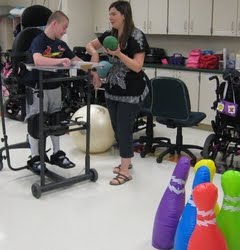Some of the services offered are listed below:
Early Childhood Special Education: The district currently has ECSE classrooms in two of the four elementary buildings, Henning Elementary and Silver Creek Elementary. The students in these classes are between the ages of three and five and are eligible to receive special education services. Each classroom has one ECSE teacher, one teacher assistant and up to ten students.
Blended Pre-School: The district currently has a blended pre-k program in two of the four elementary buildings, Henning Elementary and St. Jacob Elementary. The blended pre-k program has a mix of general education and special education students between the ages of three and five years old. Each classroom is staffed with a pre-K teacher, one teacher assistant and up to twenty students.
Early Childhood Special Education: The district currently has ECSE classrooms in two of the four elementary buildings, Henning Elementary and Silver Creek Elementary. The students in these classes are between the ages of three and five and are eligible to receive special education services. Each classroom has one ECSE teacher, one teacher assistant and up to ten students.
Blended Pre-School: The district currently has a blended pre-k program in two of the four elementary buildings, Henning Elementary and St. Jacob Elementary. The blended pre-k program has a mix of general education and special education students between the ages of three and five years old. Each classroom is staffed with a pre-K teacher, one teacher assistant and up to twenty students.
Co-Teaching: This is the least restrictive option of providing special education services for students with IEP's. In this model, the students remain in their general education classroom and receive specialized instruction and/or supports from both the special education and general education teachers.
Resource Support: In this service model, the special education teacher works closely with the general education teacher to ensure the students' needs are being met while in the general education classroom. The special education teacher provides support and re-teaching of specific concepts related to the general education curriculum either in the general education classroom or in a pull out model.
Instructional Support: This service model is designed to provide more direct instruction of curriculum in relation to the identified eligibility and educational needs of the students. Typically, these are students that are in the general education classroom between 40%-79% of their day.
Self-Contained: This highly structured classroom setting is designed for students that receive intensive instruction with a specially designed curriculum. Students in these classrooms typically spend less than 40% of their day in general education classrooms.
Therapeutic Day School: This service model is designed for students that have not been successful in the traditional education setting. Students in these programs require a comprehensive, highly structured classroom environment with a low student to teacher ratio to meet their identified needs. The goal of this model is to provide intensive behavioral, emotional, or cognitive interventions with the ultimate goal of returning the student back to a traditional educational setting.

